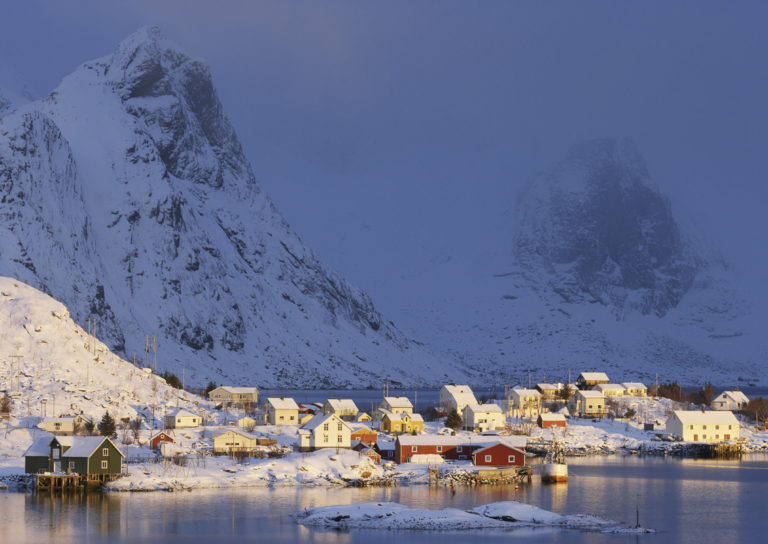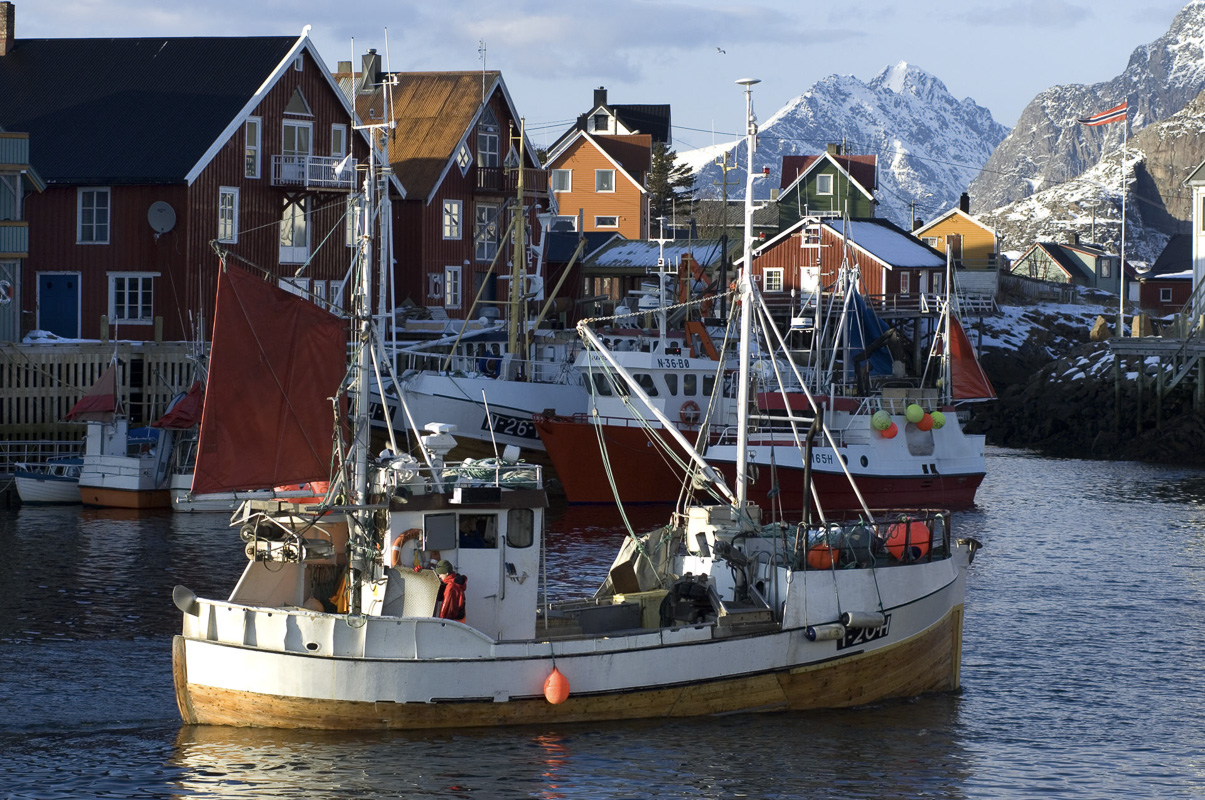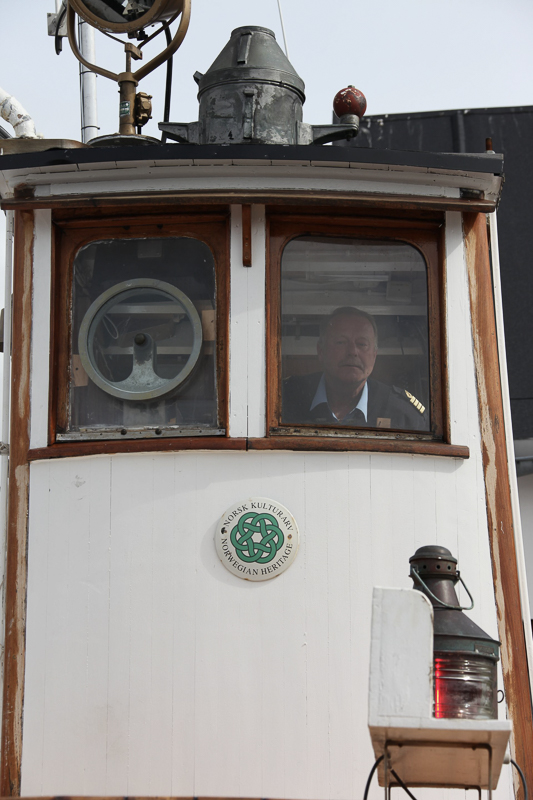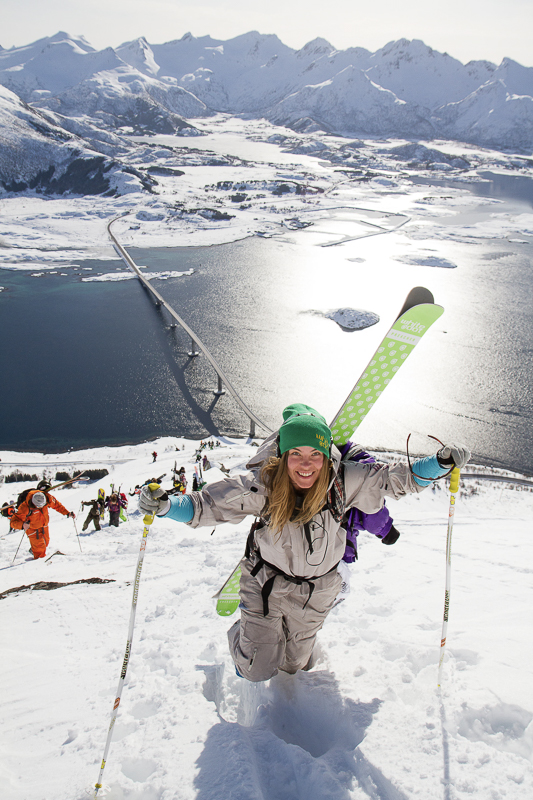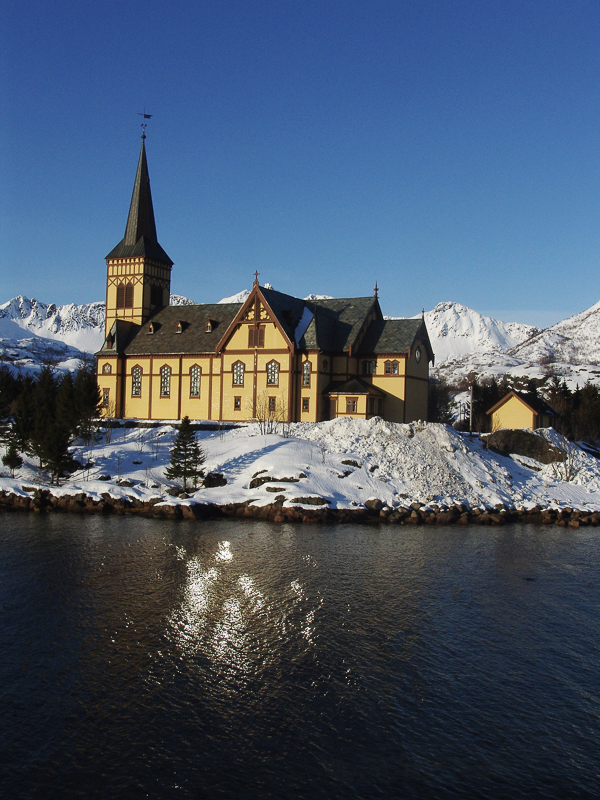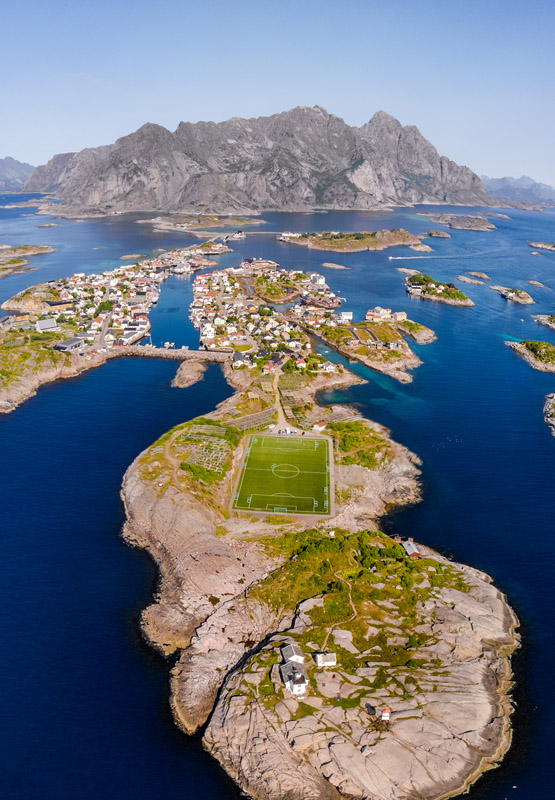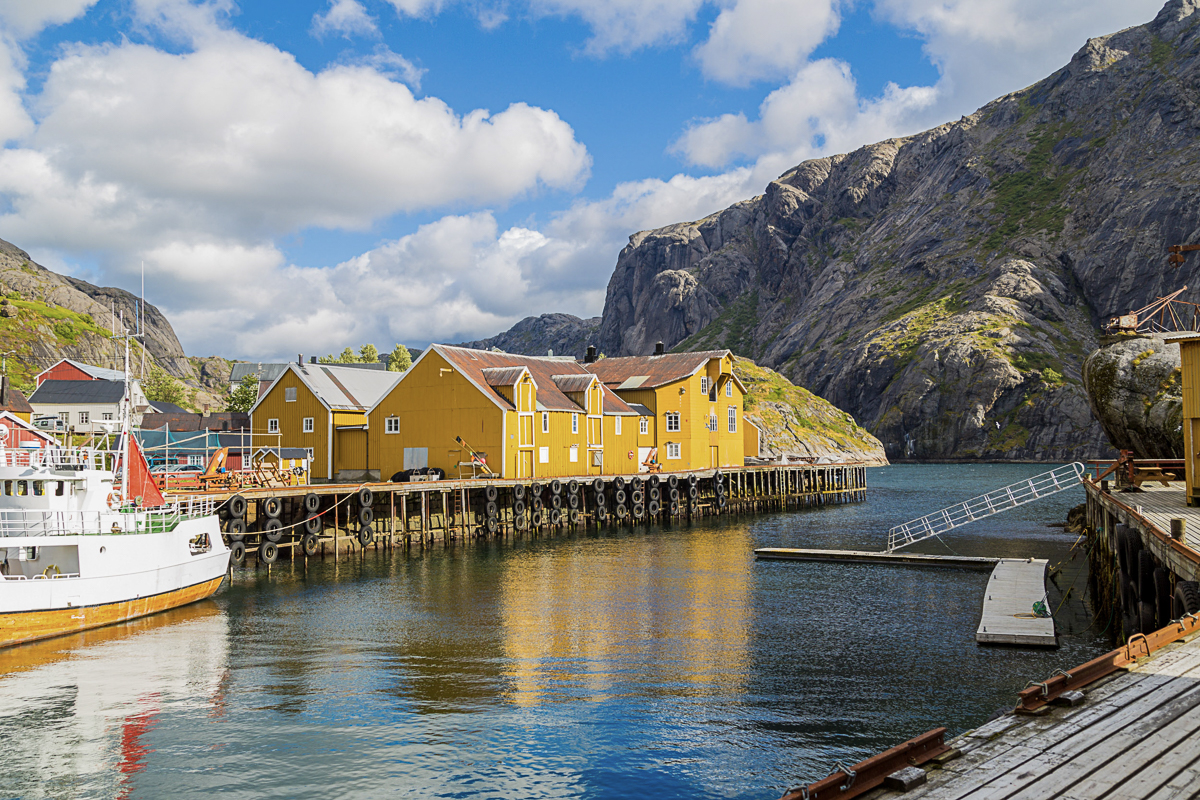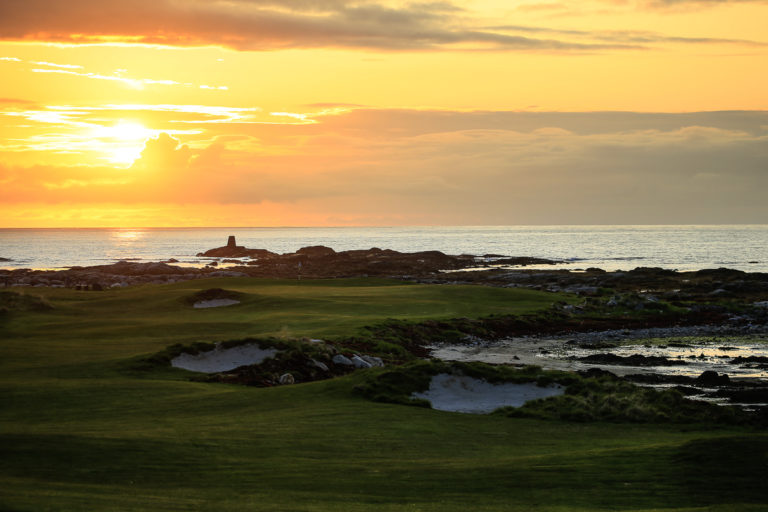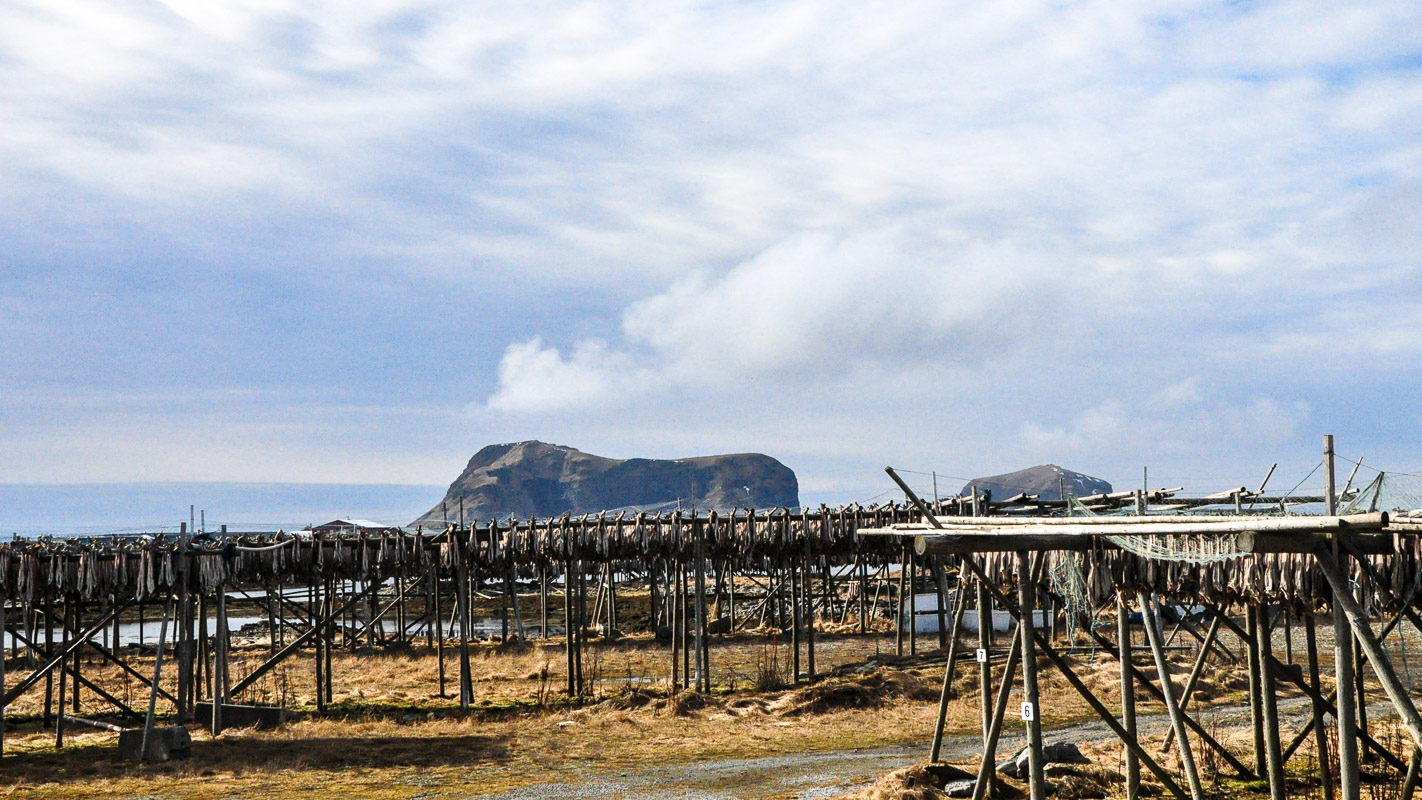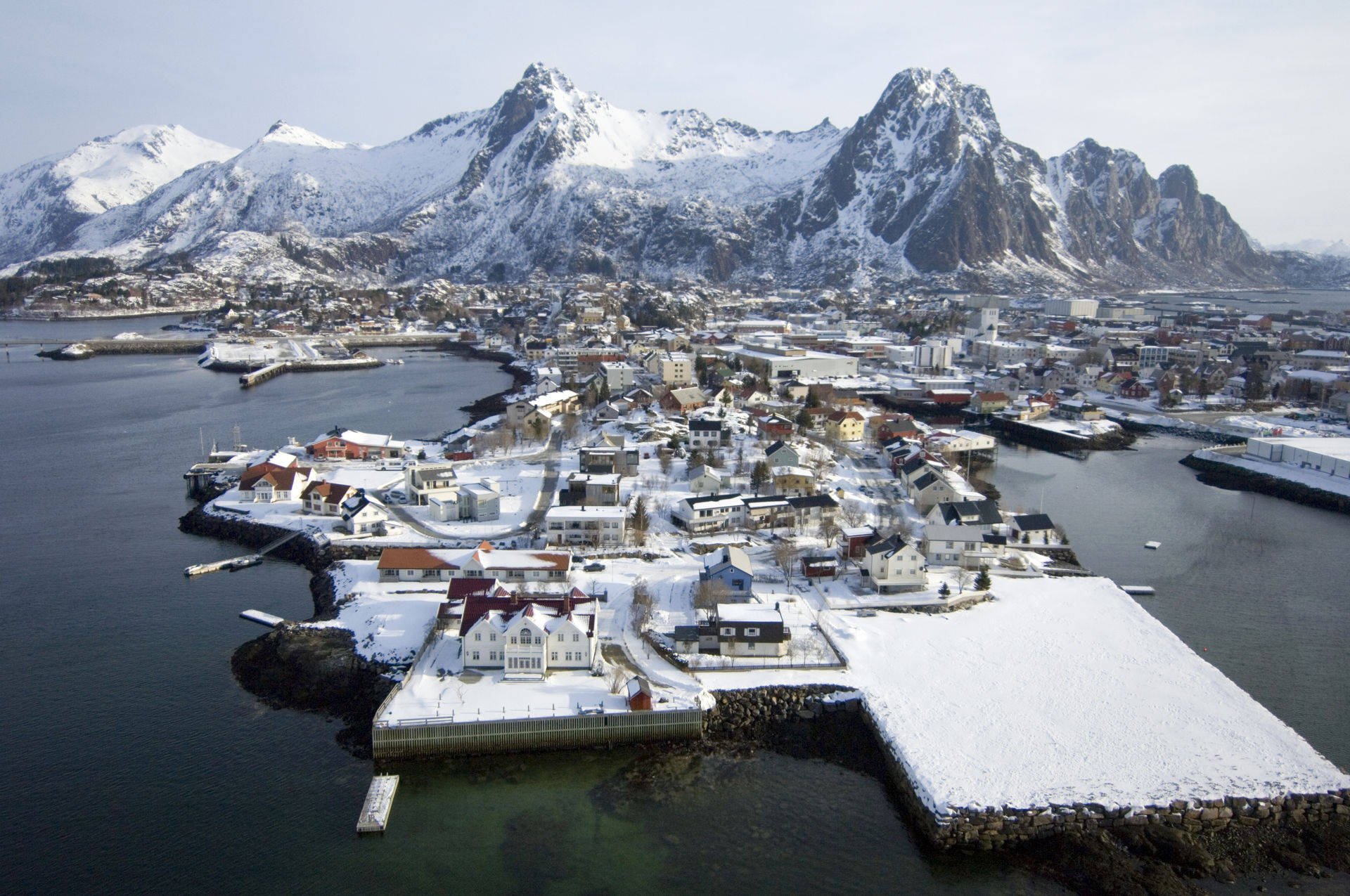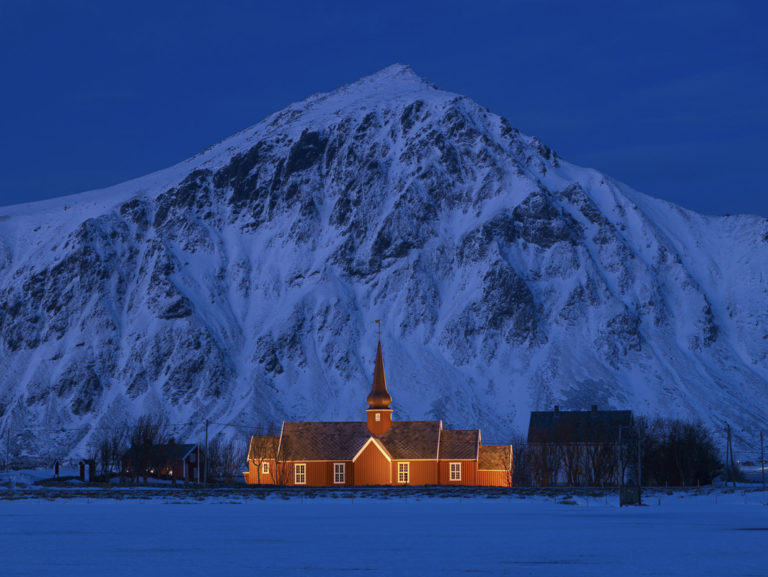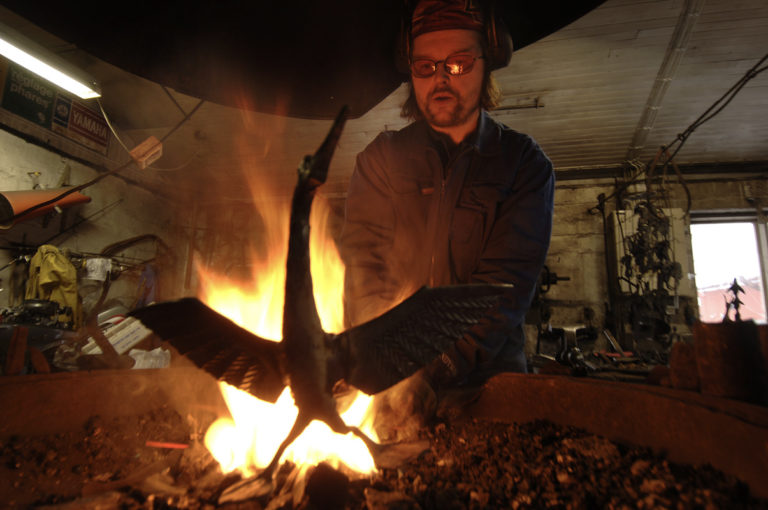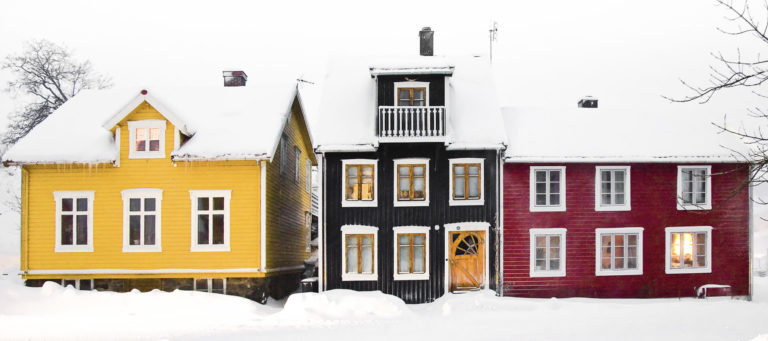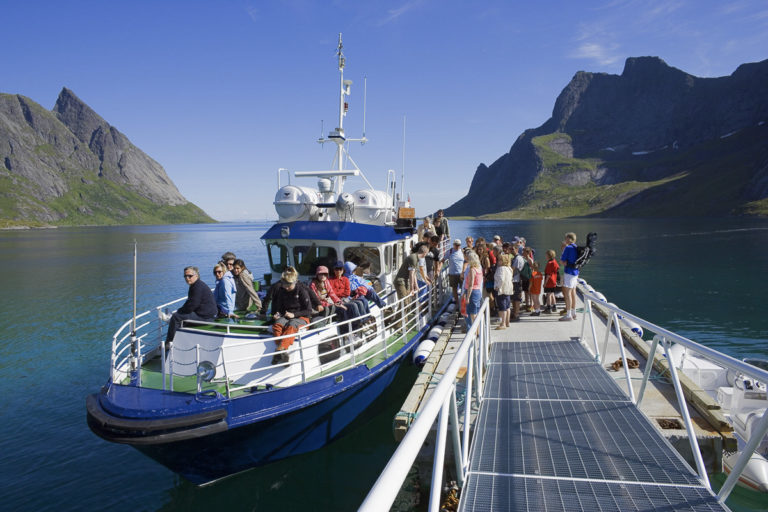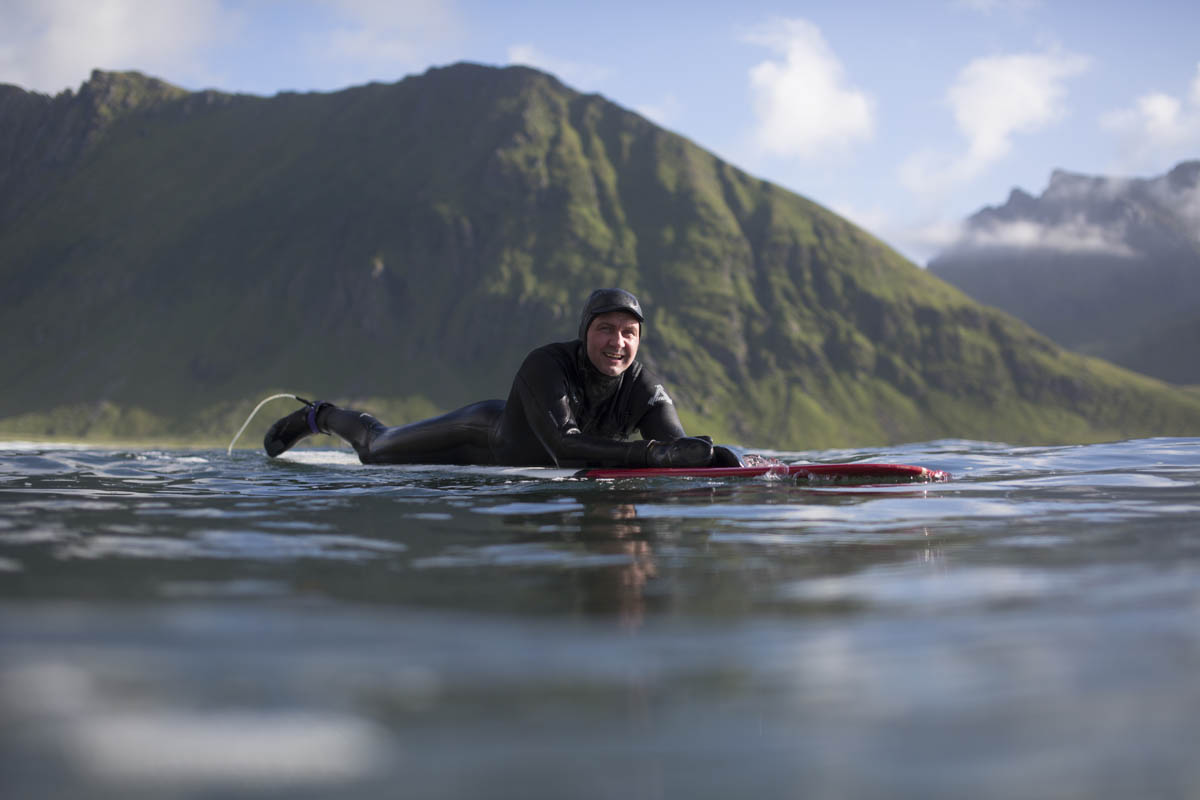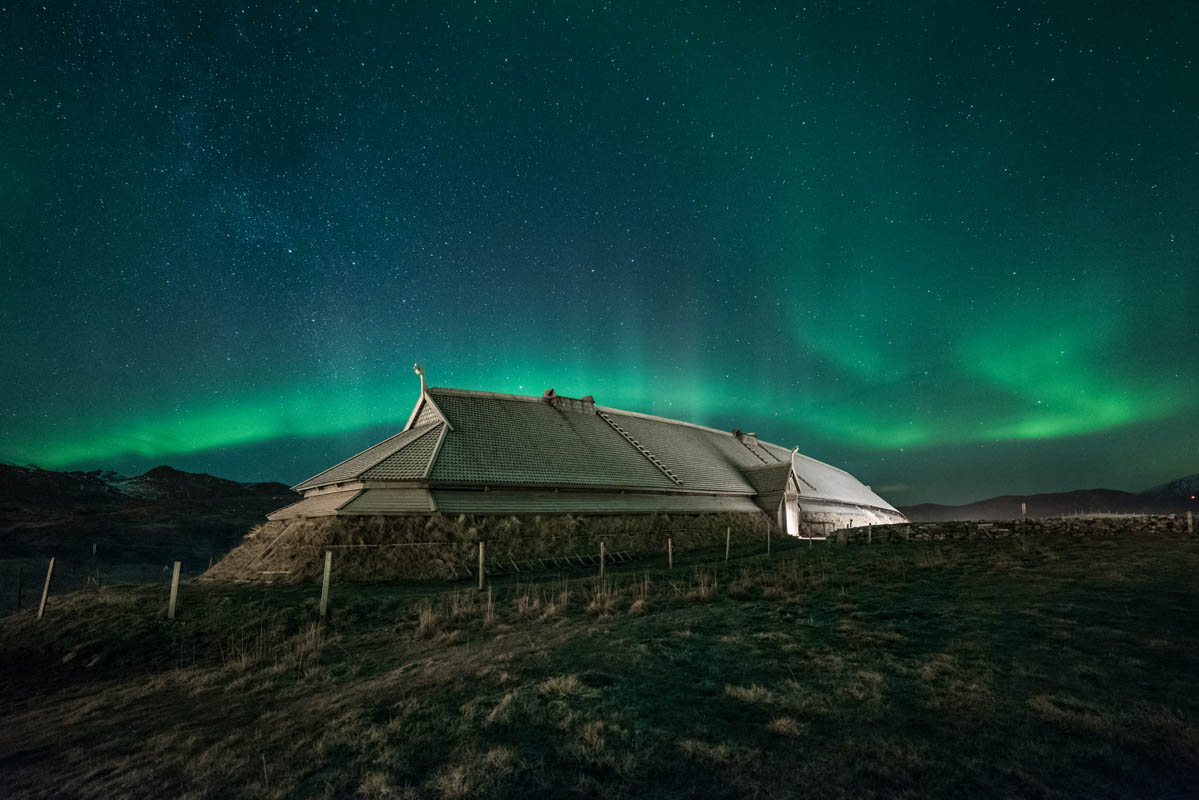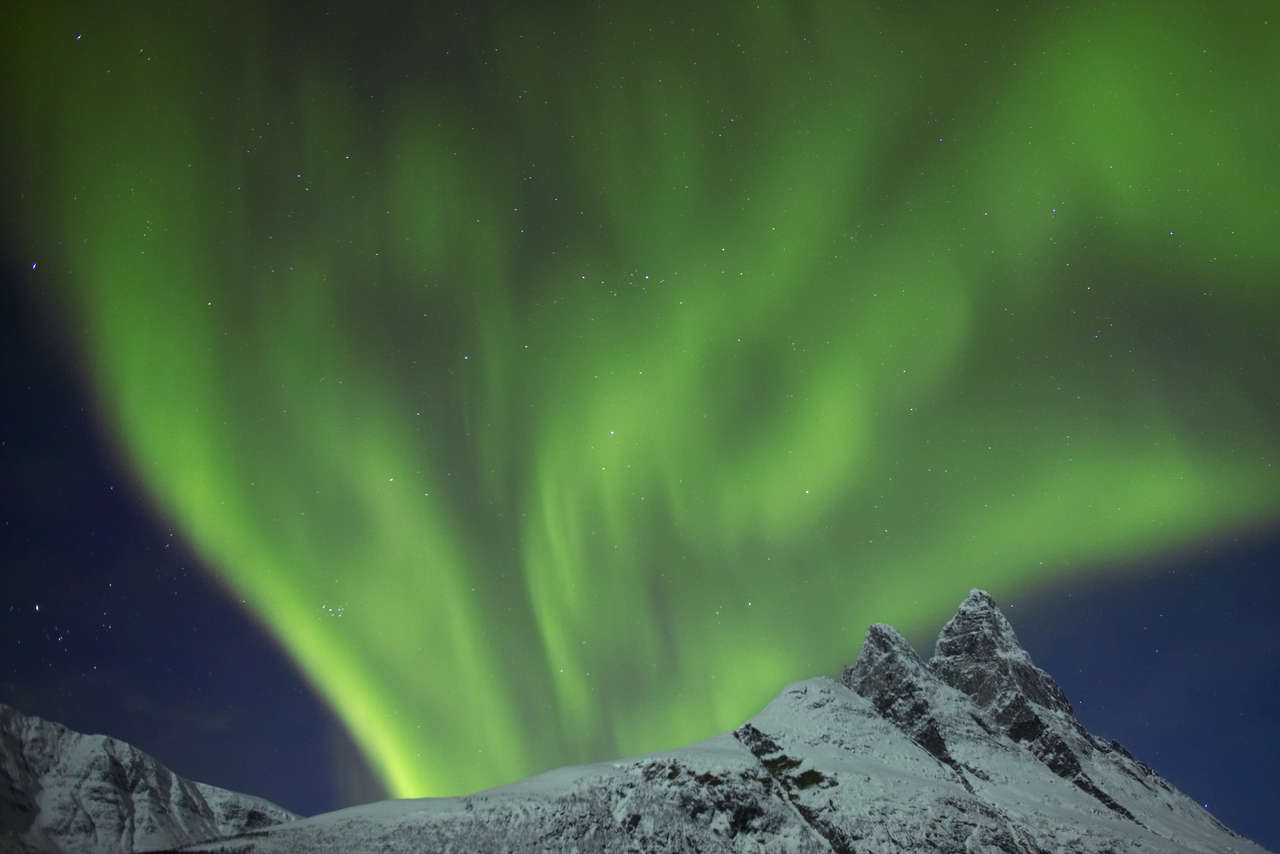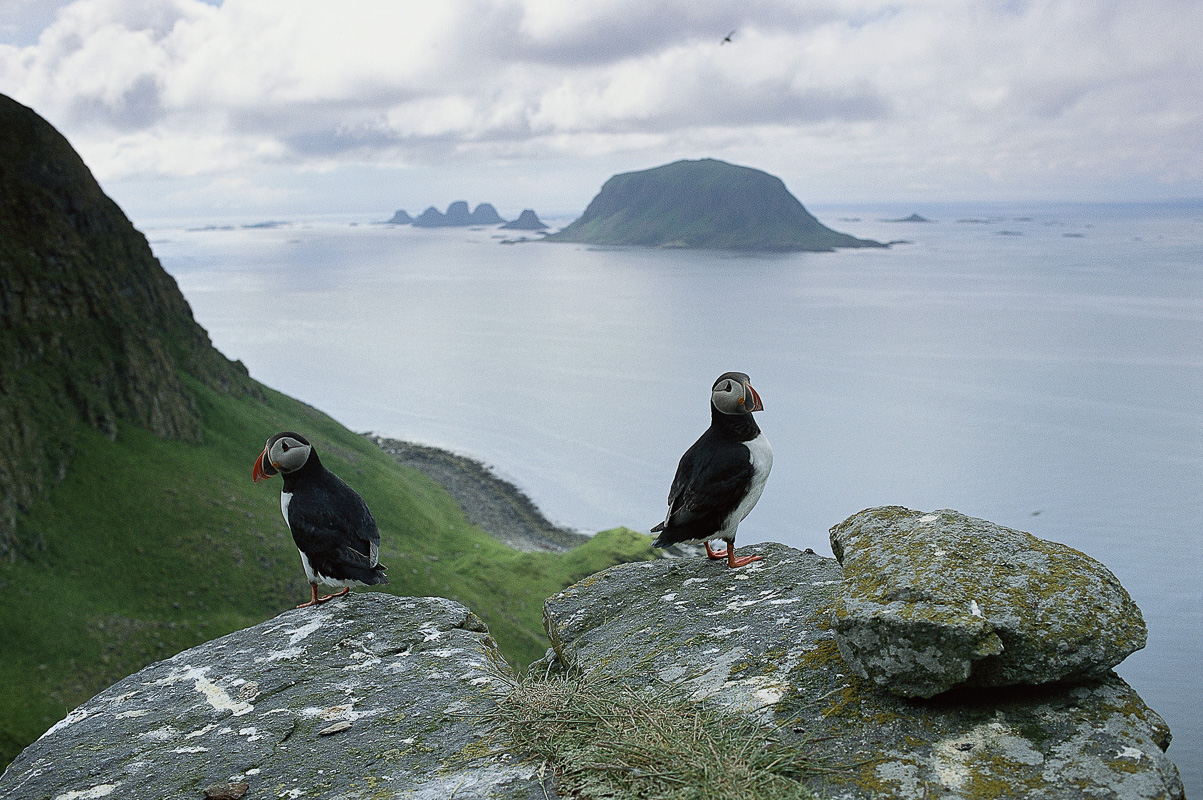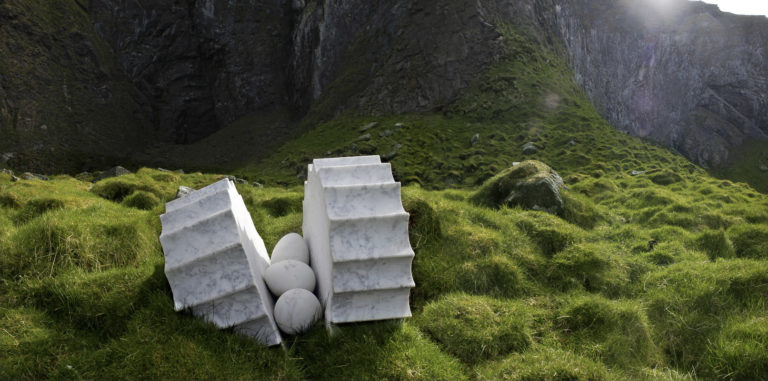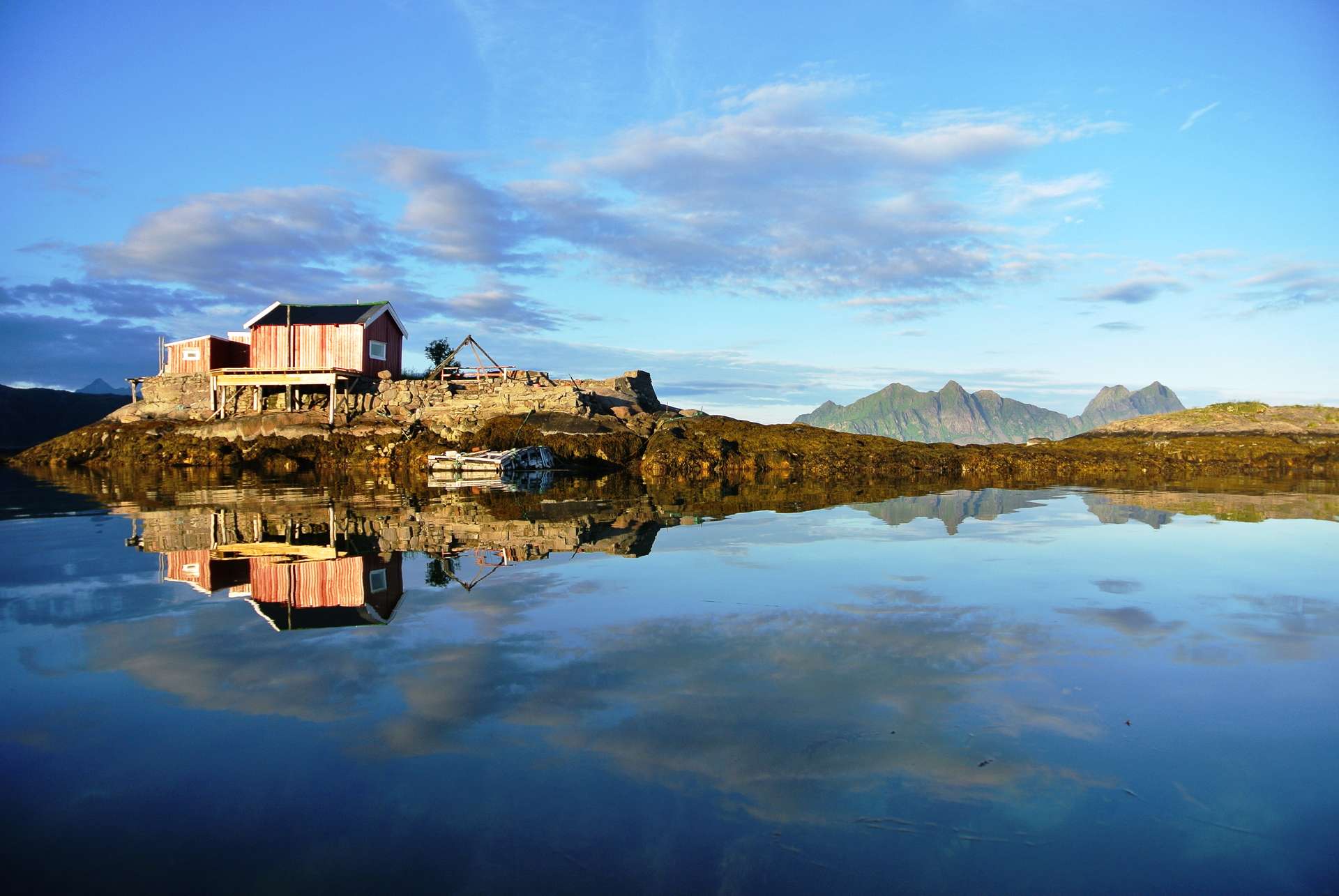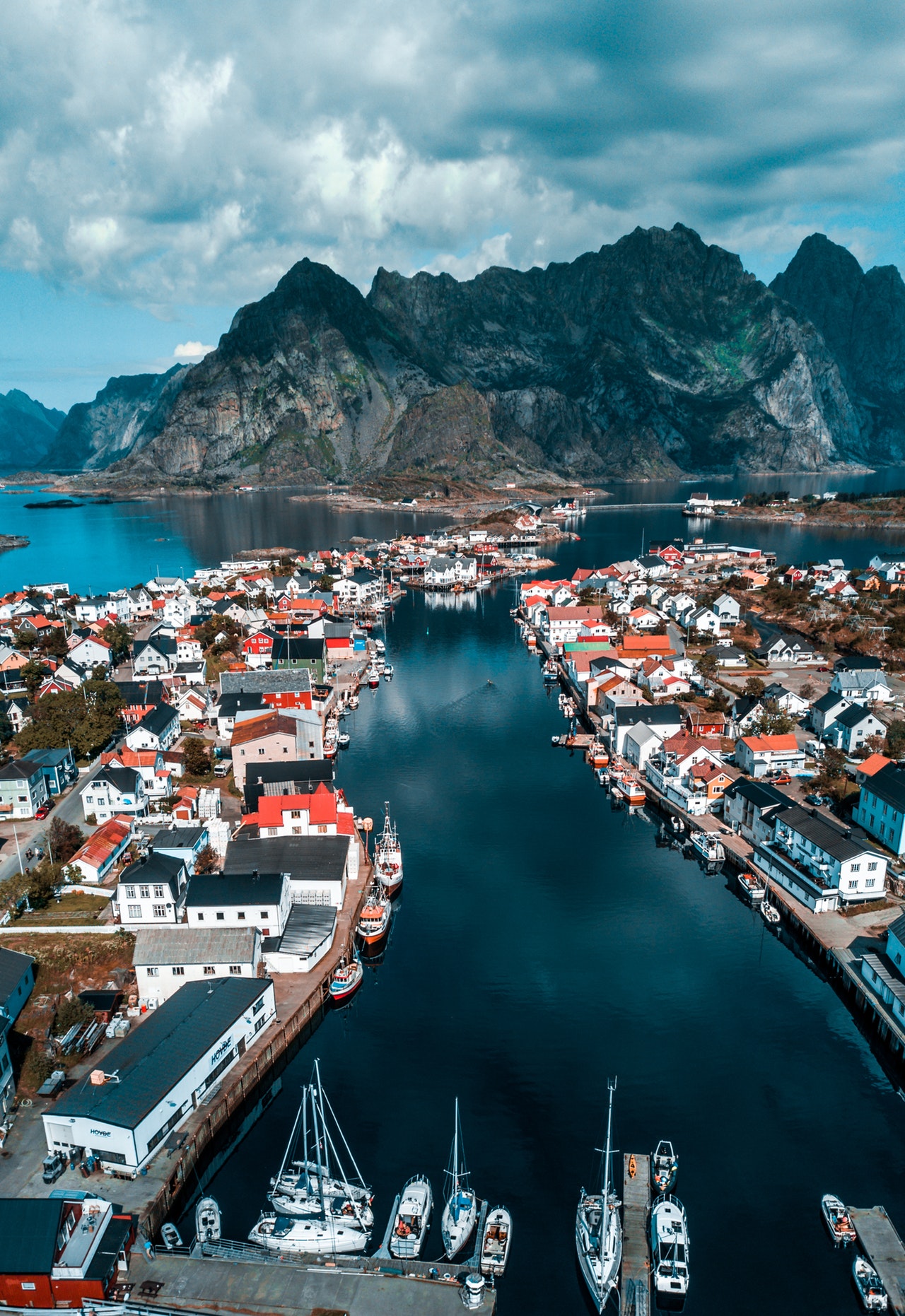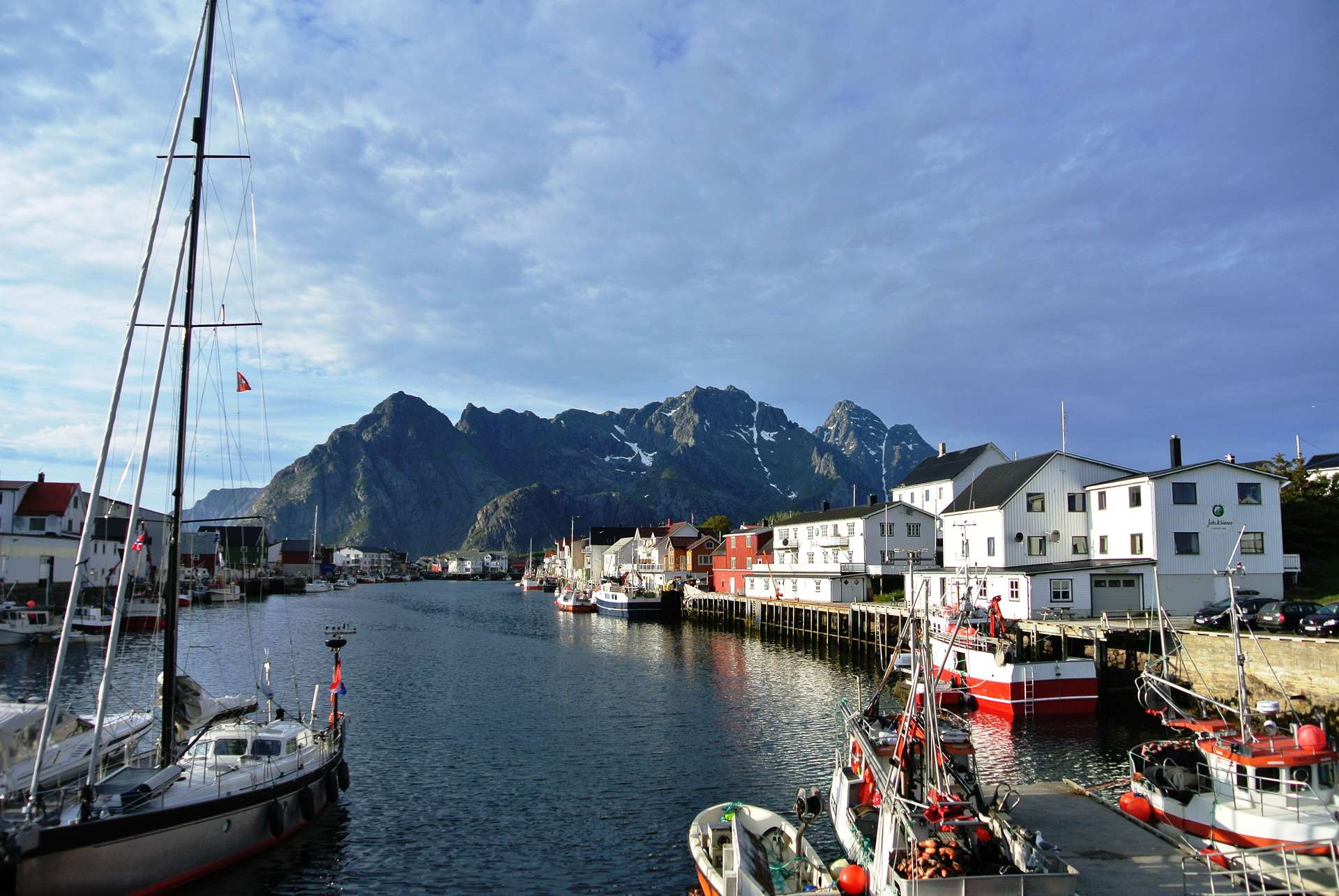Everybody loves these magic islands off the coast of Northern Norway; hikers and skiers looking for a challenge, nature lovers seeking natural beauty, deep sea fishermen hunting the biggest cod, golfers looking for Midnight Golfing, surfers looking for the wave to end all waves, hipsters seeking other hipsters, history buffs seeking the unexpected. It’s all there.
The Lofoten islands are essentially mountains wading into the ocean
Some of the oldest rocks in the world, ravaged by countless ice ages into bizarre shapes, rise abruptly and defiantly up from the tepid waters of the Gulf Stream. This wet-footed mountain range forms a coherent, 100 km long and 800-1000 metre high wall when seen from afar, the Lofoten Wall. Miraculously, all this geological brutality hides little coves, valleys and even bigger flatlands, with leafy vegetation, green agricultural fields and human habitation. Although there is always a mountain or six within easy reach.
The world’s biggest cod fishing starts after Christmas
The waters of the Gulf Stream flow between the islands and keep the winter water temperature surprisingly high for such a latitude. The Norwegian-Arctic cod, true to age-old instincts, sets about migrating from the high Arctic to Lofoten on a journey of love. From January to April, the waters are full of life, making for the biggest cod fishing season in the world. The fish is fished in the day, and in the evening it’s hung on fish racks to dry in sun and wind. No salt or smoking is needed, the winter temperatures are just right for manufacturing a unique product, stockfish.
Lofoten has exported fish for a 1000 years
In the German-Scandinavian trade centre of Haithabu, they have found a stockfish, a dry cod from Lofoten, that is more than 1000 years old. In the middle ages, Lofoten exported dried fish to all of Europe, particularly to good Catholics who were required to eat fish on Friday. Today, Italy is the main market for dried fish, and all the various fish qualities have Italian names. However, the local way of eating it, is to cook cod, cod liver and cod roe together, and enjoy with potatoes. Rustic and tasty, and real good for you!
Lofoten is the epicentre of fishing
Around Lofoten, you see the rich culture of fishing. Fish racks, the traditional pointed construction or the more modern flat ones, are found in all the fishing villages lining the south-eastern “inside” of the archipelago. Little red cabins, rorbue, were used to house fishermen from elsewhere, and today they house tourists. Traditionally, rich merchants built trading posts, with rorbue, a stately main building, a shop and boat houses.
Every fishing village has its personality
When travelling around the Lofoten Islands, you come across the colourful fishing villages. Tight-knit communities, they typically mix old and new, traditional fishing culture, modern lifestyle and a bit of tourist impact. The main street of Henningsvær is its iconic port under Mount Vågekallen, and the villages is spread over several islets, including a separate one for the football ground. Ballstad faces the Vestfjord, and is less touched by tourism than many others. Nusfjord is completely preserved and is today a resort surrounding a sheltered bay metres away from the roaring ocean. Along the outermost of the chain, islands like Hamnøy and Sakrisøy are connected with the main centre of Reine with little bridges, with the peaks around the Reinefjord as a mighty backdrop. Å (“awe”), at the very end of the road, is a lovely old trading post squeezed between a steep mountain side and the open Atlantic.
The remotest islands are the least visited
Four big islands, connected with bridges and tunnels with each other and the mainland, form the main chain of Lofoten. However, three other island communities are also part of Lofoten. The island of Skrova is found between the main islands and the mainland. The very Atlantic islands of Værøy and Røst south west of the main chain. Skrova enjoys a slightly more sheltered position between the island sand the mainland.
Røst is the little flat island, Værøy is a big mountain.
Røst is a small island filled with small farms, stone fences, fish racks and houses. This tight-knit community is firmly off the beaten track. From here, you can take a boat ride to the bird cliffs further south. Værøy is a high, mountainous island, proudly resisting the storms coming up with the Gulfstream. The maelstrom, known from Jules Verne’s and Edgar Allan Poe’s books, is a mighty ocean current between Værøy and the main chain.
Lofoten has a wild side too
The fishing villages are stringed along the inner, south-eastern coast. The north-western coast, on the other hand, is less populated, more remote and more exposed to storms. Surfers make it to the beach at Unstad because of its fast and barrelling left. Lofoten Links on the island of Gimsøy is one of Europe’s most beautiful golf grounds, where you can play around the clock in summer. It is hugging the landscape, and enjoys a view towards the Vesterålen Islands and the Midnight Sun.
For Midnight Sun, go to the north
For almost two months in summer, the Midnight Sun is observed in Lofoten. However, the geography makes the Midnight Sun a game of light and shadows. Since the picturesque fishing villages mostly face south, and the Midnight Sun is behind the towering peaks in the north, you usually cannot see the Midnight Sun in those villages. Instead, go up a mountain, go out at sea or head to the aforementioned wild northern coast, where you observe the sun from sandy beaches and quiet coves.
Lofoten’s green centre was a Viking powerhouse
Surprising to visitors seeing the islands from the air when flying in or from the sea when sailing there, is the green centre at Vestvågøy. Between the peaks, there is a low-lying protected area of green, agricultural fields around Borg and Leknes. This is where the important Viking chieftains of Lofoten resided a thousand years ago, and today you can visit Lofotr, the rebuilt 80 metre long Viking longhouse.
Contemporary art meets in Lofoten
You might suspect the Lofoten Islands to be sleepy, a bit behind time and highly traditional. Not true. Artists from around the world have settled in Lofoten, inspired by the striking landscapes and striking fishing villages. Numerous local artists have also returned after having seen the world. You see it in the numerous galleries and craft centres around the islands, as well as the imaginative street art that suddenly appears on old boat houses and crumbling fish factory concrete.
Where else can you ski in the middle of the ocean?
Imagine climbing a 6-800 metre high mountain, going almost straight up. From the top you enjoy the view of towering peaks, remote mainland mountain chains, boats fishing on an azure sea…and then set off down funnels and narrow passages and across perfect powder surfaces. The drop is maybe not the highest, but it is challenging fun, and you can do several mountains on a sunny day of late winter. In Lofoten, you stay in a rorbu, a fisherman’s cabin, at night, and then just walk or drive a few minutes to the nearest mountain, it’s all very compact and easy to organise.
Lofoten is under the Northern Lights oval
The Northern Lights zone, the oval-shaped ring around the magnetic North Pole where you have the most Northern Lights, passes near Lofoten. Lofoten is thus an excellent location to watch it. Visitors and locals alike just go for a walk in the evening, and all of a sudden the lights erupt over towering mountains. Seasoned Northern Lights hunters play hide and seek with the clouds, and sometimes go to inner remote fjords in the east, to the wild, outer side or find a nice motif with fish racks and jagged peaks for those special shots. Lofoten is among the mildest locations in the Northern Lights zone, so here you can see the Northern Lights without freezing too much.
Go cycling along Lofoten’s country roads
Cycling north of the Arctic circle may sound extreme. However, the winding, narrow roads in Lofoten mostly follow the shoreline, and are usually not any bigger physical challenge than the average biketour in Tuscany. The weather, however, demands windproof clothing. It is also no secret that the E10, the main artery through the islands, sees quite a lot of traffic in summer. Along the outer most end of the road, the narrow road can be very crowded. We therefore recommend to use the quiet side roads to the hidden gems off the beaten track for your own Lofoten experience.
Hiking in Lofoten is great fun
The Lofoten Islands are a fun, if somewhat sweat-provoking place to go hiking. You actually don’t have to go far to find a viewpoint of modest altitude offering a wide view of the whole chain. Festvågtinden offers a fabulous view of Henningsvær, Mannen is another easy one, offering views of the open Atlantic in the north. Himmeltinden (“Sky Peak”), on the other, hand is a 964 metre, all day tour. The coastal trail between Uttakleiv and Haukland is easier on the thighs, with easy access to lovely beaches.
Lofoten cuisine is all about the cod
There was a time when restaurants in Lofoten served nothing but bland and regular stuff. The locals ate fish at home, and wanted a steak when going out. Things have changed, though. Young people are not as good with traditional dishes as mummy, and tourists of course want to eat local fare. Some have turned the original recipes into restaurant food, so be prepared for boknafesk, the semi-dried cod variety, panfried cod tongues and mølja, which is cod, liver and roe. Others experiment with fresh cod, mussels and other sea creatures previously considered bait and stockfish, creating a new, funky modern cuisine. This means you eat really well in Lofoten.
Lofoten can be visited all year
The summer in Lofoten offers Midnight Sun, the widest array of tours, good hiking and biking and plenty of company from other tourists. Autumn is sometimes wet and stormy, but can also be filled with autumn colours and Northern Lights. This is a good time for surfing and shorter hikes, and very few tourists come. The polar night in December-January is equally quiet, but can be very atmospheric, with good northern lights displays. At daytime, you still see the majestic mountains for a few hours. Henningsvær is alive with its pre-Christmas market. More lively is February-March, when the Lofoten fishing is in full swing, and days are much longer. Tourists also come to ski, surf and watch the Northern Lights, although it’s far from fully booked. Late April and May see very few tourists, which is surprising given the probability of good weather and long days. This is an excellent time to come to relax, see the landscape and enjoy long, bright evenings.
Practical about Lofoten
Lofoten has its own accommodation category, the rorbuer. A rorbu is a shack or cabin where fishermen used to live during the Lofoten fishing. Today, some of them are rustic and simple. Many are revamped with modern mod-cons, without losing the old charm. A rorbu can thus be anything from backpacker style to stylish, picturesque resorts. Read the description well to adapt to your requirements and budget. Some places calling themselves rorbuer are also purpose-built for tourists, but in the old style. Campsites are spread all over the islands, welcoming caravans, campervans and tent campers alike. Guesthouses, mid range hotels and first class hotels are also found towns and villages throughout the archipelago.
The Norwegian Law of Access gives you the right to camp outside built up areas and agricultural lands for up to two nights, provided you leave the site as you found it. However, we recommend some caution in Lofoten, as this archipelago is limited in size. Some of the most popular beaches can turn into veritable tent villages in summer. This degrades the leisure areas for the locals, and the experience for non-campers visiting. We thus recommend to use camp sites, or stay in more remote areas.
You can actually drive to Lofoten, you just follow the E10 from Narvik all the way past Svolvær out to Å. Many visitors take the ferry from Bodø on the mainland to Moskenes on the outer end of the chain, as well as to the outlying communities of Værøy and Røst. Hurtigruten sails every day from Bodø at 3pm, crossing to Stamsund in about 4 hours before continuing to Svolvær, sailing along the islands. The catamaran line Nordlandsekspressen sails from Bodø to Skrova and Svolvær. Finally, you can take the little, green planes of the airline Widerøe from Bodø to Svolvær, Leknes and Røst. Bodø has direct connections with Oslo. Værøy, however, has a helicopter connection with Bodø. The Widerøe routes are also handy when connecting Lofoten to other interesting destinations, like the whale town of Andenes or Tromsø.

Book your experience in Lofoten today
You can visit Lofoten all year. See the top 10 experiences and best accommodation offers by following the link below.

